The dust has settled on the vernissage of the 56th Venice Biennale and reviews of this year’s highly politicised central exhibition, ‘All the World’s Futures’, curated by Okwui Enwezor, are decidedly mixed.
Now that the Biennale has officially opened to the public, all are free to visit and decide for themselves as to the successes, or otherwise, of the art world’s most significant international event. Given that there are 56 national participants split across the Arsenale and Giardini, not to mention the countless collateral and unofficial events, we’ve taken the liberty of picking out a few highlights from the opening days.
Bad luck for the Biennale Foundation that ‘Portable Classic’ should have previewed at the same time as the 56th Biennale. This exquisite exhibition, about the post 15th-century resurgence of interest in classical art and the history of collecting scale replicas of ancient classics, shows what great things can result from plenty of money, a thoroughly scholarly curator (Salvatore Settis with Davide Gasparotto), a beautiful exhibition design (by OMA) and the cultural muscle to be able to pull in loans from the likes of the Prado, H.M. Royal Collection, the Louvre and the Uffizi. Best in Venice by far. [CB]
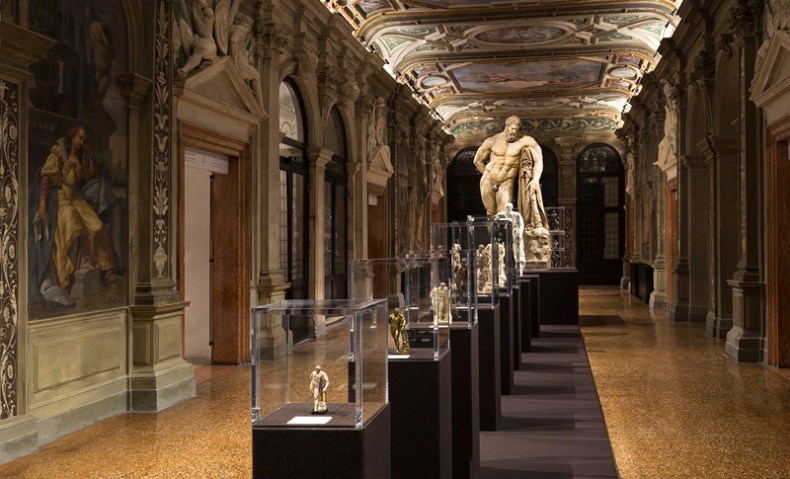
Exhibition view of ‘Portable Classic’, co-curated by Salvatore Settis and Davide Gasparotto. Fondazione Prada Venezia 2015. Photo: Attilio Maranzano. Courtesy Fondazione Prada
Contemporary conceptual art at its very best. Büchel – who once transformed Hauser & Wirth’s Piccadilly gallery into a community centre – has invited Muslims in Venice and Iceland to transform a disused 10th-century Venetian church into a mosque for the duration of the Biennale. The work draws on a number of political strands: Venice has never allowed a mosque to be built despite centuries of Islamic influence; meanwhile a campaign is currently underway to build one in Reykjavik. ‘THE MOSQUE’ makes us think about cultural difference, community, religion, the limits of art, and the very origins of ethics. It’s a simple idea, but complex in its implications. [TJ]
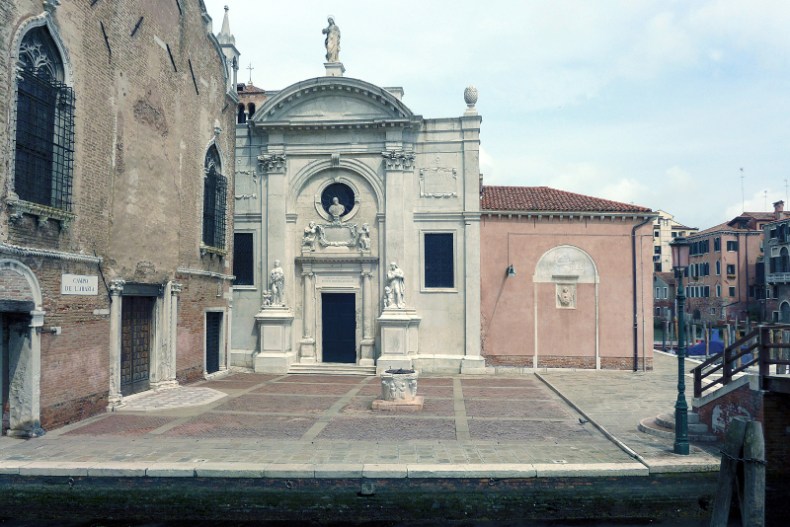
Photo Courtesy Icelandic Pavilion, 56th International Art Exhibition, La Biennale di Venezia
Sparse, but elegant, this is an unashamedly conceptual project heavily dependent on the explanations underpinning each work. The exhibition explores how value is ascribed to objects through the lenses of craftsmanship, reproduction and archaeological history. Not all the pieces work seamlessly together, but highlights include a series of rock fragments discarded from archaeological sites, mosaic pavements decorated with the same varieties of weeds found growing on archaeological sites, and men’s shoes constructed from knock-off handbags purchased from street vendors in Venice. A thoughtful and articulate display from Panayiotou. [CB]
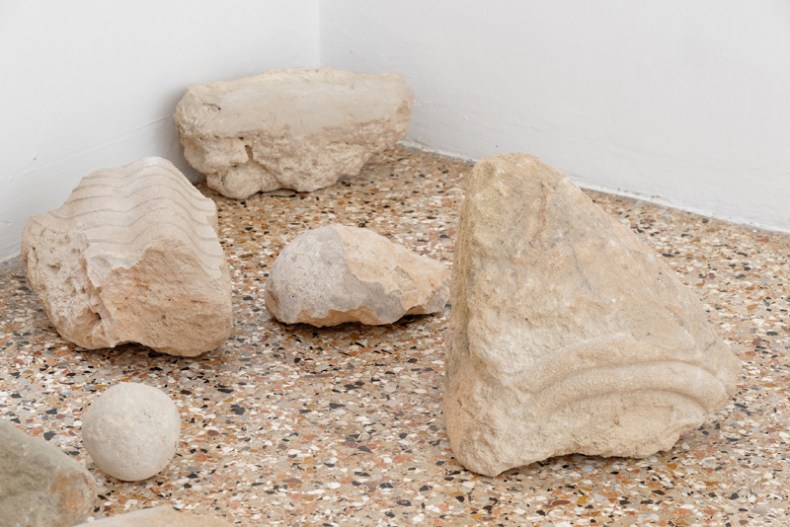
Limestone sculptures by Christodoulos Panayiotou at the Cyprus Pavilion Photo: Aurelien Mole
There is a great idea at the heart of this exhibition – that artists and craftsmen have long been fascinated by proportion and geometry – but it isn’t always expressed as clearly as one might wish. For one thing, with nearly 140 participating artists, there are far too many works on display. Curator Axel Vervoordt’s illuminating trademark combination of old and new is in evidence, but a greater degree of curatorial editing would have helped tighten things up. Highlights included the pairing of Botticelli’s 1485 Portrait of a Woman with Jef Verheyen’s 1962 Four Elements Air, and a new abstract painting by Dutch artist, Jean-Marie Bytebier. [CB]
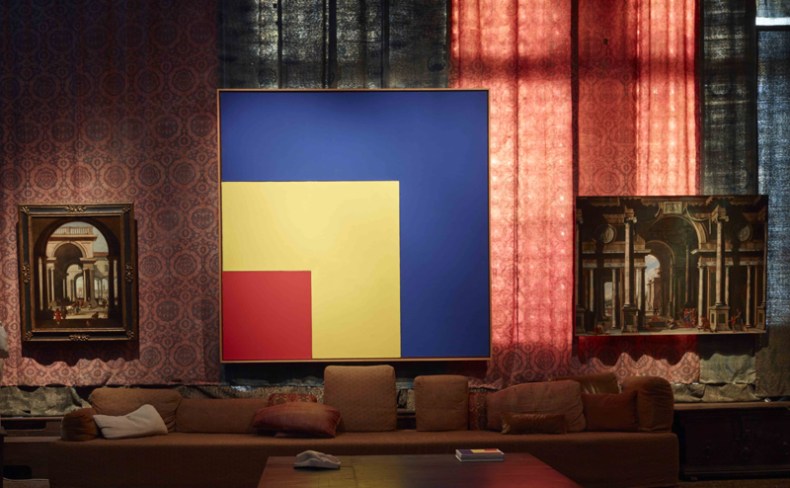
Codazzi and Ellsworth Kelly: Piano Nobile, Palazzo Fortuny © Jean-Pierre Gabriel
More about Axel Vervoordt gallery
Works by five contemporary artists form the first Iraq pavilion at Venice since 1976. Organised by the Ruya Foundation and curated by Philippe Van Cauteren, the exhibition includes painting, video and some masterful photography of life in 1960’s Iraq by Latif Al Ani. The highlight is Rabab Ghazoul’s film piece, displayed on several monitors throughout the show. Members of the public have been filmed at their homes discussing various aspects of the Chilcot Enquiry. By commenting on Tony Blair’s body language or repeating parts of his answers, the emphasis is on justice as public performance and the slippery relationship between truth and falsehood. [TJ]
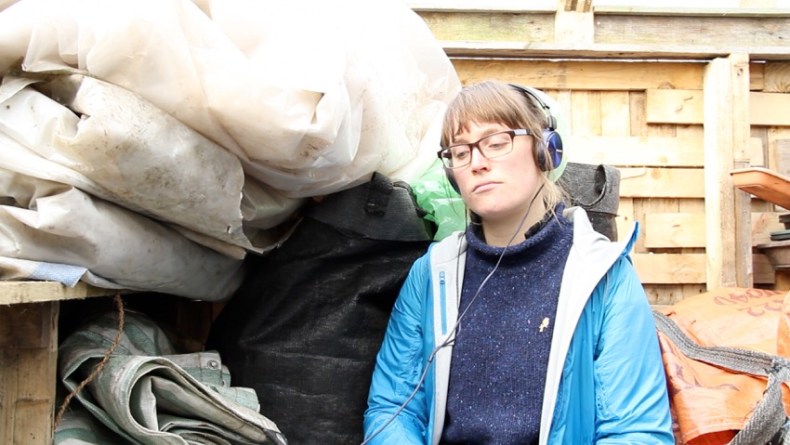
A new video work by Rabab Ghazoul looks again at the Chilcot Enquiry
A cultural olive branch was at play in this joint exhibition of works by Indian artist, Mumbai-based Shilpa Gupta, and Pakistani artist, Rashid Rana based in Lahore. Of the two, Gupta’s work displayed a greater depth of thought and finesse of execution. Her work – which considers the relationship between governmental bureaucracy and oppression – brought to mind ever-so-slight comparisons with Jill Magid’s terrific 2009 ‘Authority to Remove’ exhibition at Tate Modern. A misreading meant my initial expectations were of a group show with a diverse roster of Indian and Pakistani artists – that wasn’t the case, but such a show may have been even more powerful a statement. [CB]
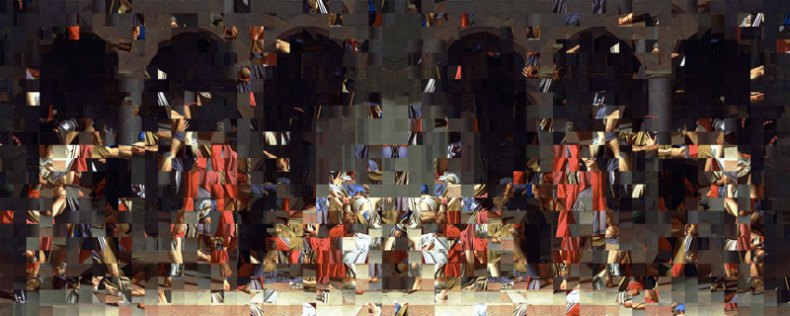
War Within I (2013), Rashid Rana. Image: courtesy the artist and Lisson Gallery, London
A survey exhibition of the work of Korean artist Minjung Kim, curated by Jean-Christophe Ammann and chicly presented on Via Garibaldi by London/New York commercial gallerists Luxembourg & Dayan. Spread across several floors are works from the past 15 years. Each consists of multiple layers of handmade paper from the inner bark of the paper mulberry tree, painted by the artist with sumi ink or gently singed. The most successful pieces are small-scale splodgy monochromes or dreamy mountainscapes in pink or grey, reminiscent of Ian McKeever in their sensitivity to light. [TJ]

Mountain (2012), Minjung Kim © 2015 Minjung Kim
Related Articles
What to see at the Venice Biennale
‘Deliberate Clichés’: An Interview with Matthew Darbyshire
Dealer’s Choice: the story behind Axel Vervoordt
Dealer’s Choice: Alma Luxembourg

The Very Best of the Venice Biennale
Mountain (2012), Minjung Kim © 2015 Minjung Kim
Share
The dust has settled on the vernissage of the 56th Venice Biennale and reviews of this year’s highly politicised central exhibition, ‘All the World’s Futures’, curated by Okwui Enwezor, are decidedly mixed.
Now that the Biennale has officially opened to the public, all are free to visit and decide for themselves as to the successes, or otherwise, of the art world’s most significant international event. Given that there are 56 national participants split across the Arsenale and Giardini, not to mention the countless collateral and unofficial events, we’ve taken the liberty of picking out a few highlights from the opening days.
Portable Classic – Fondazione Prada
Bad luck for the Biennale Foundation that ‘Portable Classic’ should have previewed at the same time as the 56th Biennale. This exquisite exhibition, about the post 15th-century resurgence of interest in classical art and the history of collecting scale replicas of ancient classics, shows what great things can result from plenty of money, a thoroughly scholarly curator (Salvatore Settis with Davide Gasparotto), a beautiful exhibition design (by OMA) and the cultural muscle to be able to pull in loans from the likes of the Prado, H.M. Royal Collection, the Louvre and the Uffizi. Best in Venice by far. [CB]
Exhibition view of ‘Portable Classic’, co-curated by Salvatore Settis and Davide Gasparotto. Fondazione Prada Venezia 2015. Photo: Attilio Maranzano. Courtesy Fondazione Prada
Christoph Büchel – THE MOSQUE
Icelandic Pavilion
Contemporary conceptual art at its very best. Büchel – who once transformed Hauser & Wirth’s Piccadilly gallery into a community centre – has invited Muslims in Venice and Iceland to transform a disused 10th-century Venetian church into a mosque for the duration of the Biennale. The work draws on a number of political strands: Venice has never allowed a mosque to be built despite centuries of Islamic influence; meanwhile a campaign is currently underway to build one in Reykjavik. ‘THE MOSQUE’ makes us think about cultural difference, community, religion, the limits of art, and the very origins of ethics. It’s a simple idea, but complex in its implications. [TJ]
Photo Courtesy Icelandic Pavilion, 56th International Art Exhibition, La Biennale di Venezia
Christodoulos Panayiotou – Two Days After Forever
Cyprus Pavilion
Sparse, but elegant, this is an unashamedly conceptual project heavily dependent on the explanations underpinning each work. The exhibition explores how value is ascribed to objects through the lenses of craftsmanship, reproduction and archaeological history. Not all the pieces work seamlessly together, but highlights include a series of rock fragments discarded from archaeological sites, mosaic pavements decorated with the same varieties of weeds found growing on archaeological sites, and men’s shoes constructed from knock-off handbags purchased from street vendors in Venice. A thoughtful and articulate display from Panayiotou. [CB]
Limestone sculptures by Christodoulos Panayiotou at the Cyprus Pavilion Photo: Aurelien Mole
Proportio – Palazzo Fortuny
There is a great idea at the heart of this exhibition – that artists and craftsmen have long been fascinated by proportion and geometry – but it isn’t always expressed as clearly as one might wish. For one thing, with nearly 140 participating artists, there are far too many works on display. Curator Axel Vervoordt’s illuminating trademark combination of old and new is in evidence, but a greater degree of curatorial editing would have helped tighten things up. Highlights included the pairing of Botticelli’s 1485 Portrait of a Woman with Jef Verheyen’s 1962 Four Elements Air, and a new abstract painting by Dutch artist, Jean-Marie Bytebier. [CB]
Codazzi and Ellsworth Kelly: Piano Nobile, Palazzo Fortuny © Jean-Pierre Gabriel
More about Axel Vervoordt gallery
Invisible Beauty
Iraq Pavilion
Works by five contemporary artists form the first Iraq pavilion at Venice since 1976. Organised by the Ruya Foundation and curated by Philippe Van Cauteren, the exhibition includes painting, video and some masterful photography of life in 1960’s Iraq by Latif Al Ani. The highlight is Rabab Ghazoul’s film piece, displayed on several monitors throughout the show. Members of the public have been filmed at their homes discussing various aspects of the Chilcot Enquiry. By commenting on Tony Blair’s body language or repeating parts of his answers, the emphasis is on justice as public performance and the slippery relationship between truth and falsehood. [TJ]
A new video work by Rabab Ghazoul looks again at the Chilcot Enquiry
My East is Your West – Palazzo Benzon
Shilpa Gupta and Rashid Rana
A cultural olive branch was at play in this joint exhibition of works by Indian artist, Mumbai-based Shilpa Gupta, and Pakistani artist, Rashid Rana based in Lahore. Of the two, Gupta’s work displayed a greater depth of thought and finesse of execution. Her work – which considers the relationship between governmental bureaucracy and oppression – brought to mind ever-so-slight comparisons with Jill Magid’s terrific 2009 ‘Authority to Remove’ exhibition at Tate Modern. A misreading meant my initial expectations were of a group show with a diverse roster of Indian and Pakistani artists – that wasn’t the case, but such a show may have been even more powerful a statement. [CB]
War Within I (2013), Rashid Rana. Image: courtesy the artist and Lisson Gallery, London
Minjung Kim – Ca’Boto
A survey exhibition of the work of Korean artist Minjung Kim, curated by Jean-Christophe Ammann and chicly presented on Via Garibaldi by London/New York commercial gallerists Luxembourg & Dayan. Spread across several floors are works from the past 15 years. Each consists of multiple layers of handmade paper from the inner bark of the paper mulberry tree, painted by the artist with sumi ink or gently singed. The most successful pieces are small-scale splodgy monochromes or dreamy mountainscapes in pink or grey, reminiscent of Ian McKeever in their sensitivity to light. [TJ]
Mountain (2012), Minjung Kim © 2015 Minjung Kim
Related Articles
What to see at the Venice Biennale
‘Deliberate Clichés’: An Interview with Matthew Darbyshire
Dealer’s Choice: the story behind Axel Vervoordt
Dealer’s Choice: Alma Luxembourg
Unlimited access from just $16 every 3 months
Subscribe to get unlimited and exclusive access to the top art stories, interviews and exhibition reviews.
Share
Recommended for you
Exotic Dangers
While Hurvin Anderson’s paintings tease out the complexities of relocation and displacement, Peter Doig’s risk sliding into exoticism
First Look: Modern art and television at the Jewish Museum
When people talk about the ‘avant-garde’, they don’t normally have television in mind
Market Preview: May 2015
Susan Moore previews New York sales in the May issue of Apollo